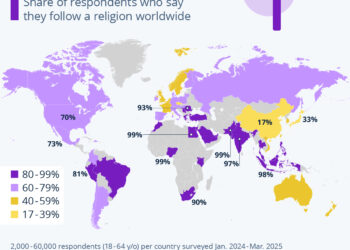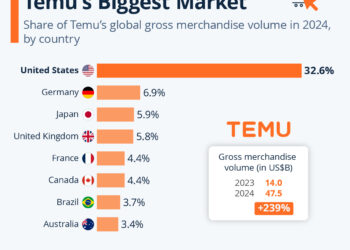Understanding the Impact of U.S. Car Tariffs on the Global Automotive Industry
Overview of the Tariff Announcement
Recently, the U.S. government announced a significant tariff of 25% on imports of passenger cars and automotive parts. This decision has sent ripples throughout the global automotive market, leading to a dramatic decline in the stock valuations of car manufacturers across various countries. The industries in Germany, Japan, and South Korea experienced the most substantial hit, reflecting their status as major exporters to the U.S. market.
Key Countries Affected
Germany
Germany’s automotive sector is home to some of the world’s most recognized and respected brands, including Mercedes-Benz and BMW. These manufacturers have established a significant footprint in the U.S. market, and the new tariffs pose a substantial threat to their operations. The reliance on exports to the United States means that a sizable portion of German automakers’ revenues could be impacted.
Japan
Japanese car manufacturers such as Toyota and Honda have long been favored for their reputation for reliability and innovation. However, with the introduction of these tariffs, the cost of doing business in the U.S. may increase significantly for these companies, potentially driving them to reconsider their pricing strategies and market positioning within the competitive landscape.
South Korea
In South Korea, companies like Hyundai and Kia have been rapidly expanding their presence in the U.S. market. These automakers often rely on competitive pricing to win over American consumers, and the added burden of tariffs could compromise their ability to maintain such pricing, ultimately affecting their sales figures and market share.
The Ripple Effect on U.S. Automakers
The Surprise Decline in Stock Prices
One of the most unexpected outcomes following the tariff announcement was the impact on U.S.-based manufacturers. Major companies such as General Motors and Ford saw their stock prices plummet by 7% and nearly 4%, respectively. This raises questions about the effectiveness of tariffs intended to bolster the American car industry.
The Complex Supply Chain
It’s crucial to understand that U.S. automakers are not insulated from the effects of the tariffs. They rely substantially on imported parts and components for their vehicles, many of which are sourced from Canada and Mexico. The interconnectedness of the automotive supply chain complicates the narrative that these tariffs will solely benefit U.S. manufacturers.
Tariff Exemption Nuances
Understanding the Exemption Criteria
While vehicles assembled in Canada and Mexico can sometimes be exempt from tariffs, this only applies to parts that are wholly produced or substantially transformed in the U.S. This criterion adds a layer of complexity for many automakers. They must navigate these regulations carefully as they look to minimize their exposure to tariffs, potentially leading to increased administrative costs and strategic shifts in sourcing and production.
Potential Strategies by Automakers
In response to the tariff landscape, automakers may have to adapt in several ways. Some possible strategies could include:
-
Localization of Supply Chains: To mitigate the impact of tariffs, companies may look to localize their supply chains, increasing domestic production and sourcing parts from U.S. suppliers.
- Pricing Adjustments: Automakers may need to adjust their pricing strategies for the American market. This could involve raising prices on imported vehicles or modifying their cost structures to maintain competitiveness.
The Future of the Automotive Industry in the Context of Tariffs
The ripple effects of the recent tariff announcement on the automotive industry underscore the vulnerabilities faced by both foreign and domestic car manufacturers. As the industry grapples with these changes, it becomes critical for stakeholders to stay informed and agile in responding to a rapidly evolving market landscape. The complexities of global trade and the intricate web of supply chains will continue to challenge manufacturers as they navigate this new era of tariffs and trade policy.






